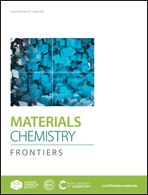Carbon-framework-encapsulated CoMn2O4 spinel derived from electrospun nanofiber coupling via the photothermal approach reinforces PMS activation to eliminate 2,4-dichlorophenol†
Abstract
Although metal–carbon combinations have been demonstrated to promote efficiency in the advanced oxidation process (AOP), multidimensional coupling by exploiting metal–carbon interactions, dual-metal redox cycles, and photothermal synergetic catalysis remains rare in AOP. Here, we report carbon framework hybridized plasmonic CoMn2O4 spinel composite catalysts derived from electrospun nanofibers by tuning thermal processing. The multiple active species of Co(II/III) and Mn(II/III/IV) were coupled into the spinel structure of the CoMn2O4 nanoparticles, affording fast electron transfer and abundant redox pairs of active species. The constructed abundant M–O–C interactions and more active Co(II) and Mn(III) species in the optimal CMO-C-600 are responsible for the promotive activation of PMS to generate the more singlet oxygen (1O2) and sulfate radical (SO4˙−). Thereby, the resulting optimal catalysts showed excellent catalytic efficiency for 2,4-dichlorophenol degradation, and the reaction rate constant (0.881 min−1) was ∼4 times higher than that (0.218 min−1) of CoMn2O4 alone. In addition, we further revealed the appreciable photothermal effect of plasmonic CoMn2O4 spinel coupling with carbon composites irradiated by sunlight, which accelerates the highly concentrated 2,4-dichlorophenol (50 ppm) degradation within 7 min under the generated localized surface heating function.



 Please wait while we load your content...
Please wait while we load your content...